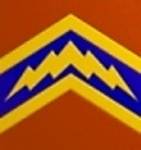Two part question: What material do you use for aircraft riggings and how do you attach them?
World War II
Discuss WWII and the era directly before and after the war from 1935-1949.
Discuss WWII and the era directly before and after the war from 1935-1949.
Hosted by Rowan Baylis
Question on Aircraft Riggings
shonen_red

Joined: February 20, 2003
KitMaker: 5,762 posts
AeroScale: 543 posts

Posted: Thursday, April 19, 2007 - 07:49 PM UTC

JackFlash

Joined: January 25, 2004
KitMaker: 11,669 posts
AeroScale: 11,011 posts

Posted: Friday, April 20, 2007 - 05:01 AM UTC
For rigging see. . . Click on >>>Rigging discussion
Vulcan1701

Joined: April 25, 2007
KitMaker: 34 posts
AeroScale: 25 posts

Posted: Sunday, April 29, 2007 - 09:01 PM UTC
I am interested in this information also. I checked out that link and some of the replies in the other thread...it seems most of these rigging techniques are for WW1 biplanes only. I am interested to know what some of you World War II aircraft modelers use for the antenna lines? Is it simply a matter of finding a tight thread or line and merely gluing it into a small gouge in the model on two ends?
Phantom2

Joined: April 18, 2006
KitMaker: 708 posts
AeroScale: 678 posts

Posted: Sunday, April 29, 2007 - 09:51 PM UTC
Quoted Text
Two part question:
1)What material do you use for aircraft riggings and
2)how do you attach them?
Hi all!

1) I use a very flexible Lycra-tread, the brand is Gold-Zack.
2) Depends on how my aircraft looks.
Typically, the tread is drawn between a mast on the spine and the fin.
If I can I drill a small hole, otherwise I glue the tread directly on top of the mast.
If there´s no positive locations, I drill small holes, a small (!) dab of glue in the hole and then the tread is attatched, wait a couple of seconds for the glue to set and the tread is fixed.
I always use CA glue to secure the tread.
Another method that works very well is;
Drill a small hole (0,1 - 0,2mm), get one end of the tread in the hole and use the end of a cocktailpin (or toothpick?) to secure the tread (push in and twist off.
Then I paint the tread with some silver mixed with black, and the attatchment points with small dabs of the corresponding colors.
Some examples;
Trumpeter Kawanishi H6K5 "Mavis", 1/144


Tamiya Lancaster 1/48;
Here i have used the "cocktail-pin method", you can still see the unpainted pin ends inside the glass.

Hope you got some help!
Cheers!



Stefan E


Ranger74

Joined: April 04, 2002
KitMaker: 1,290 posts
AeroScale: 87 posts

Posted: Thursday, May 03, 2007 - 10:15 PM UTC
I like to use steel wire, either purchased at a hobby store or guitar wire from music store. I drill holes at all appropriate locations during construction. Many 30's & 40's era biplanes have metal aerodynamic covers over the rigging cables so the wire works well. The diameter of the wire depends on scale of model.
I cut the the wire about 1/4" or 6mm long which allows some trimming room. I use either super glue or white glue in at least one end to hold the wire. On shorter spans, 1/72 fighters for example, white glue is sufficient. On 1/32 fighters super glue makes a stronger bond.
One advantage with wire is it doesn't require painting.
For flight control wires, I use either stretched sprue as I can make it in smaller diameter than steel wire.
Jeff
I cut the the wire about 1/4" or 6mm long which allows some trimming room. I use either super glue or white glue in at least one end to hold the wire. On shorter spans, 1/72 fighters for example, white glue is sufficient. On 1/32 fighters super glue makes a stronger bond.
One advantage with wire is it doesn't require painting.
For flight control wires, I use either stretched sprue as I can make it in smaller diameter than steel wire.
Jeff

slapdash

Joined: May 10, 2007
KitMaker: 5 posts
AeroScale: 4 posts

Posted: Sunday, May 13, 2007 - 03:06 PM UTC
Although I haven't actually rigged a biplane, I have had some success with aerial wires using "Invisible thread", which is made of nylon and available from haberdashery shops. The advantage of this stuff is that you can stick it in place loosely with superglue and then tension it by holding it about 10 inches over a candle. Carefully, of course, as you have to light the candle.
I've got a Walrus and a Swordfish to do at some point so I'll have a go at this rigging lark...
I've got a Walrus and a Swordfish to do at some point so I'll have a go at this rigging lark...
EdgarBrooks

Joined: June 03, 2006
KitMaker: 397 posts
AeroScale: 384 posts

Posted: Sunday, May 13, 2007 - 04:18 PM UTC
I've never found anything better than stretched sprue, one of the advantages being that it's free. It's unaffected by room temperarure, and, if you catch it, it'll break, and will cost nothing to replace. Catch a length of thread, and you risk pulling the whole model to the floor. I use clear sprue, for aerials; when it's stretched it has a shine, just like metal.
Edgar
Edgar
Posted: Sunday, May 13, 2007 - 06:37 PM UTC
Hi Ralph.
I use smoke coloured thread for rigging my 1:72 biplanes.
I drill into the top wing and attach the thread with a drop of ca glue.
Then I drill all the way through the bottom wing and thread it through.I use a set of self locking tweezers to tension the thread and then use another drop of ca glue to secure it.When its dry I snip away the excess thread and sand away the mark it leaves.

Nige
I use smoke coloured thread for rigging my 1:72 biplanes.
I drill into the top wing and attach the thread with a drop of ca glue.
Then I drill all the way through the bottom wing and thread it through.I use a set of self locking tweezers to tension the thread and then use another drop of ca glue to secure it.When its dry I snip away the excess thread and sand away the mark it leaves.

Nige

 |












